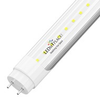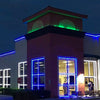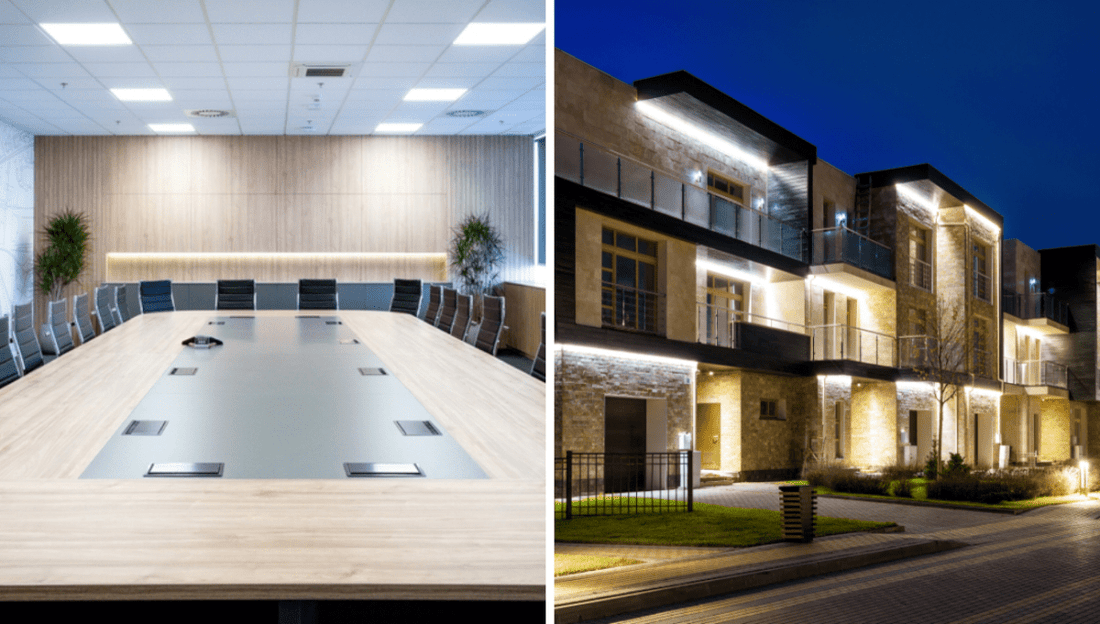Introduction
LED lights have revolutionized the way we illuminate our spaces, offering energy efficiency, durability, and a range of lighting options. But when it comes to choosing LED lights, it's crucial to understand the differences between commercial and residential lighting. Whether you're lighting up a cozy living room or a sprawling office space, knowing these distinctions can help you make the right choice.
Understanding LED Lights
What are LED Lights?
LED (Light Emitting Diode) lights are a type of lighting technology that uses semiconductors to convert electricity into light. Unlike traditional incandescent bulbs, LEDs do not rely on heating a filament to produce light, making them more efficient and long-lasting.
How Do LED Lights Work?
LEDs work by passing an electrical current through a semiconductor material. This process releases light in the form of photons, which we see as visible light. The efficiency of this process means that LEDs produce very little heat compared to other lighting technologies.
Benefits of LED Lights
- Energy Efficiency: LEDs use significantly less energy than incandescent or fluorescent bulbs.
- Long Lifespan: LED lights can last up to 25,000 hours or more.
- Environmental Impact: LEDs contain no harmful chemicals and are recyclable.
- Variety of Options: Available in a range of colors, temperatures, and designs.
Commercial Lighting
Definition and Purpose
Commercial lighting is designed to meet the needs of businesses and public spaces. It focuses on functionality, durability, and efficiency to support the varied activities that occur in commercial environments.
Types of Commercial LED Lights
- High Bay Lights: Ideal for warehouses and large facilities.
- Panel Lights: Suitable for offices and conference rooms.
- Flood Lights: Used for outdoor security and area lighting.
- Tube Lights: Common in commercial buildings and parking garages.
Applications in Commercial Settings
- Offices: Task lighting and ambient lighting for productivity.
- Retail Stores: Attractive lighting to enhance product displays.
- Warehouses: Bright and efficient lighting for safety and visibility.
- Hospitals: Reliable lighting for various medical environments.
Residential Lighting
Definition and Purpose
Residential lighting is tailored to the needs of homes, focusing on creating a comfortable and aesthetically pleasing environment. It includes a mix of ambient, task, and accent lighting to suit different rooms and activities.
Types of Residential LED Lights
- Bulbs: Versatile and can be used in various fixtures.
- Strip Lights: Ideal for accent lighting under cabinets or along stairways.
- Recessed Lights: Provide a clean, modern look for general lighting.
- Chandeliers: Decorative fixtures for living rooms and dining areas.
Applications in Residential Settings
- Living Rooms: Warm and inviting lighting for relaxation.
- Kitchens: Bright task lighting for cooking and food prep.
- Bedrooms: Soft lighting for a restful atmosphere.
- Bathrooms: Functional lighting for grooming and personal care.
Key Differences Between Commercial and Residential Lighting
Purpose and Usage
Commercial lighting is designed for functionality and efficiency in business environments, whereas residential lighting focuses on aesthetics and comfort for home settings.
Design and Aesthetics
- Residential: Emphasis on design, color temperature, and fixtures that complement home decor.
- Commercial: Prioritizes durability and functionality over aesthetics.
Energy Consumption and Efficiency
- Commercial: Higher energy demands due to larger spaces and longer operating hours.
- Residential: Lower energy consumption with a focus on energy-efficient solutions.
Light Output and Intensity
- Commercial: Requires higher light levels for visibility and safety.
- Residential: Softer, adjustable lighting suited to different activities.
Durability and Lifespan
- Commercial: Lights need to withstand constant use and have a longer lifespan.
- Residential: Lifespan is still important but not as critical as in commercial settings.
Cost and Budget Considerations
- Commercial: Higher upfront costs but greater long-term savings due to energy efficiency and durability.
- Residential: Budget-friendly options available with a focus on balancing cost and aesthetics.
Choosing the Right Lighting for Your Needs
Factors to Consider for Commercial Lighting
- Space Size: Larger areas require more powerful lighting solutions.
- Operational Hours: Consider energy-efficient options for long operating hours.
- Purpose: Ensure the lighting meets the specific needs of the business environment.
Factors to Consider for Residential Lighting
- Room Function: Tailor lighting to the activities performed in each room.
- Aesthetics: Choose fixtures that complement your home decor.
- Energy Efficiency: Opt for LED lights to reduce energy consumption and costs.
Benefits of Using LED Lights in Both Settings
- Energy Savings: LED lights use less electricity, reducing energy bills.
- Environmental Benefits: Lower carbon footprint due to reduced energy consumption.
- Long-Term Cost Savings: LEDs last longer, reducing the need for frequent replacements.
Common Mistakes to Avoid
- Overlooking Lighting Needs: Consider the specific requirements of each space.
- Ignoring Energy Efficiency: Choose energy-efficient options to save on costs.
- Not Considering Design and Aesthetics: Balance functionality with design for a cohesive look.
Future Trends in LED Lighting
Innovations in LED Technology
- Smart Lighting: Integration with home automation systems for control via smartphones.
- Advanced Controls: Dimming, color-changing, and motion-sensing capabilities.
- Sustainable Solutions: Increased focus on eco-friendly and recyclable materials.
Emerging Trends in Commercial and Residential Lighting
- Human-Centric Lighting: Adjusting lighting to support natural circadian rhythms.
- Decorative LED Fixtures: Combining aesthetics with energy efficiency.
- Outdoor LED Solutions: Enhanced security and landscape lighting options.
Conclusion
Understanding the differences between commercial and residential lighting can help you make informed decisions that suit your specific needs. While commercial lighting prioritizes functionality and durability, residential lighting focuses on comfort and aesthetics. Regardless of the setting, LED lights offer numerous benefits, including energy savings, long lifespan, and environmental impact.
FAQs
A. Commercial lighting focuses on functionality and durability, while residential lighting emphasizes aesthetics and comfort.
Q. Are LED lights suitable for all types of commercial applications?
A. Yes, LED lights come in various forms and can be used for different commercial applications, including offices, warehouses, and retail stores.
Q. How can I improve the energy efficiency of my home lighting?
A. Switch to LED lights, use dimmers, and consider smart lighting solutions to enhance energy efficiency.
Q. What are the benefits of switching to LED lights in my business?
A. LED lights offer energy savings, long lifespan, and reduced maintenance costs, making them ideal for business use.
Q. Can I use commercial LED lights in my home?
A. While it's possible, commercial LED lights may be too bright or functional for home use. It's best to choose lighting designed for residential settings.


























































































1 comment
Thanks for explaining the difference between residential and commercial lighting. With proper information and tips, it becomes easier to understand different lighting types. Thanks.